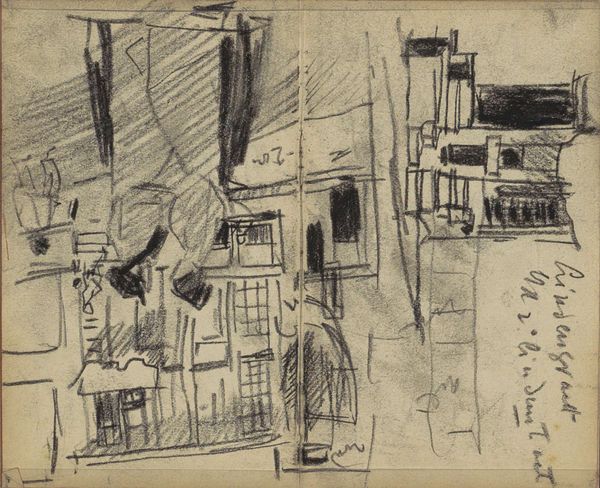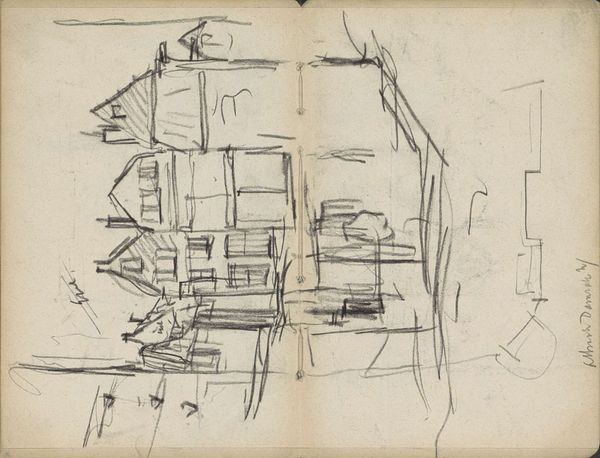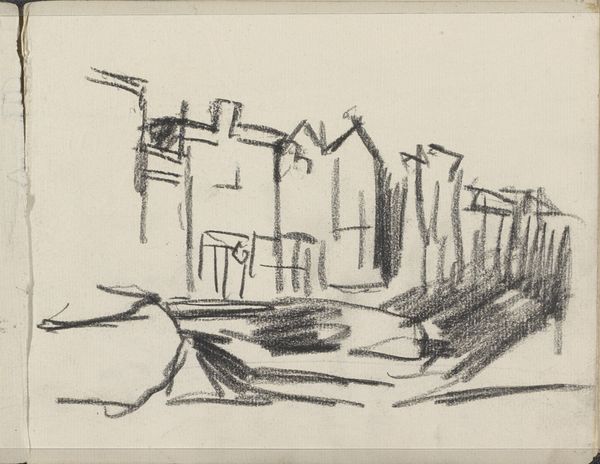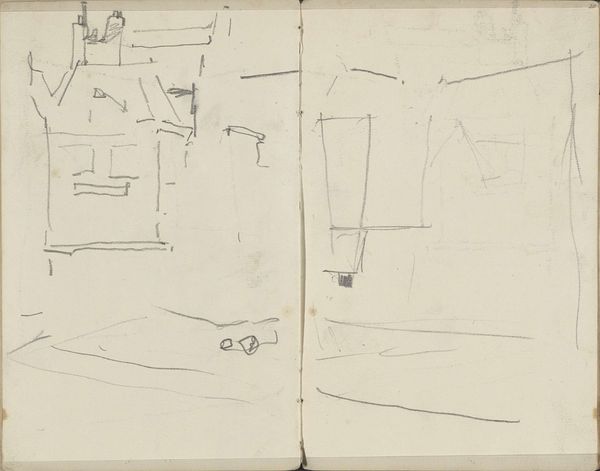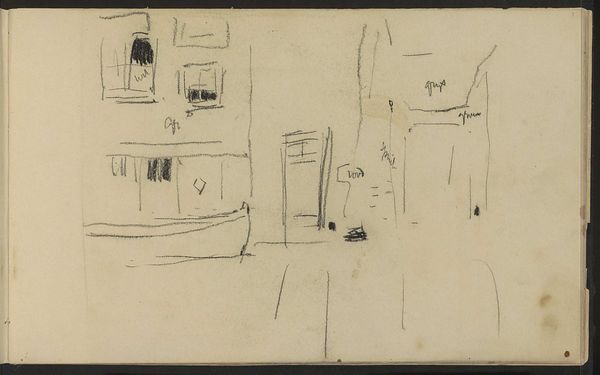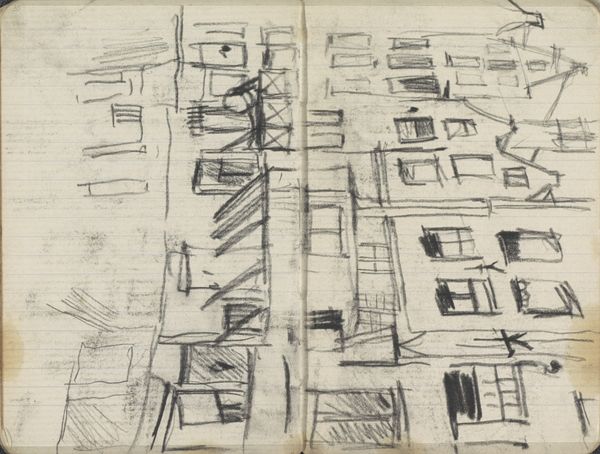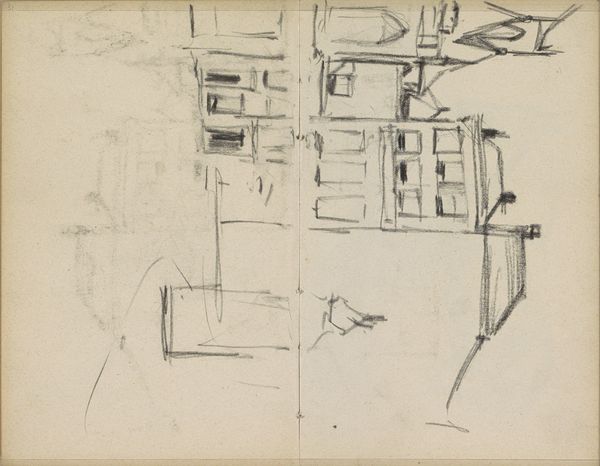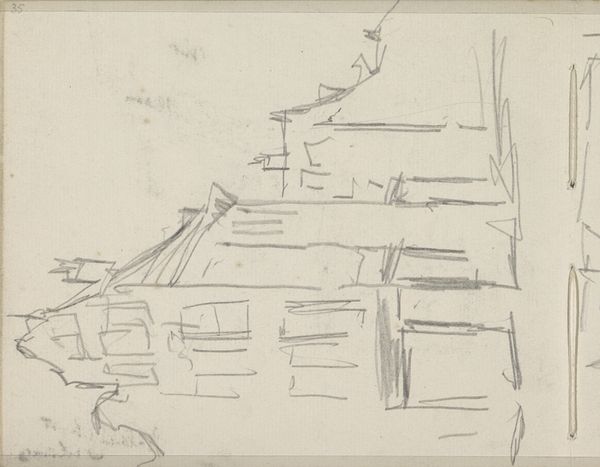
Gezicht op de hoek van de Korte Dijkstraat en de Krom Boomssloot te Amsterdam c. 1897
0:00
0:00
Copyright: Rijks Museum: Open Domain
Curator: This is Willem Witsen’s “View of the Corner of Korte Dijkstraat and Krom Boomssloot in Amsterdam,” from around 1897. Editor: It looks like a fleeting thought captured in ink—a bit like scribbling down a dream before it vanishes completely. Kind of tilted and haphazard but full of character. Curator: Indeed. Witsen was deeply involved in the revival of etching in the Netherlands and a key figure in the Dutch art scene. This sketch, one can tell was quickly rendered and might have been done on the spot to inspire a more finished work. It emphasizes his interest in urban environments. Editor: I love the starkness. It feels very modern, almost brutally honest in its simplicity. He doesn’t seem interested in prettifying Amsterdam. There is nothing idealized. The roofs almost appear to be pressing in on each other! Curator: Absolutely, he’s after something raw. His connections with literary circles influenced his desire to depict the unvarnished truth of city life, departing from romantic portrayals. Notice how he simplifies the architectural forms, focusing more on spatial relationships. It shows an understanding of how light defines buildings even in pen and ink. Editor: The pen work itself is wonderful – so loose, so confident. It has a playful nature while maintaining a kind of precision, an attention to getting each little architectural quirk just so. You can imagine the wind and dampness. Curator: That aligns perfectly with his broader artistic project to engage with social and atmospheric realities. Witsen was invested in revealing what he termed "the poetry of modern life.” He considered places like Amsterdam to be documents in themselves. Editor: I see a quiet moment seized, something profoundly solitary in his choice to focus on such an everyday scene. It speaks volumes about the poetry he must have found within himself and his immediate world. It has this kind of intimate "found poetry" quality to it. Curator: Ultimately, through pieces like this, Witsen advocated for an expanded definition of artistic merit, one where seemingly unremarkable corners held significance and demonstrated his lasting contribution to Dutch Impressionism. Editor: Makes you want to grab a sketchbook and capture a slice of your world, doesn't it? To celebrate our messy, beautiful, utterly imperfect spaces, where even an unplanned sketch becomes poetry.
Comments
No comments
Be the first to comment and join the conversation on the ultimate creative platform.
